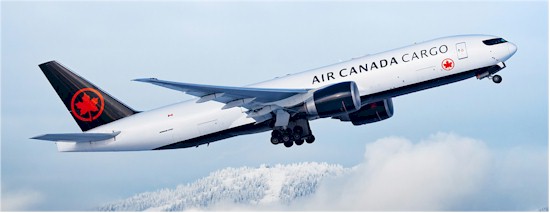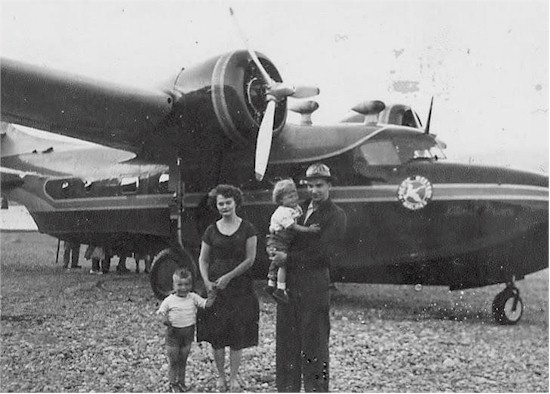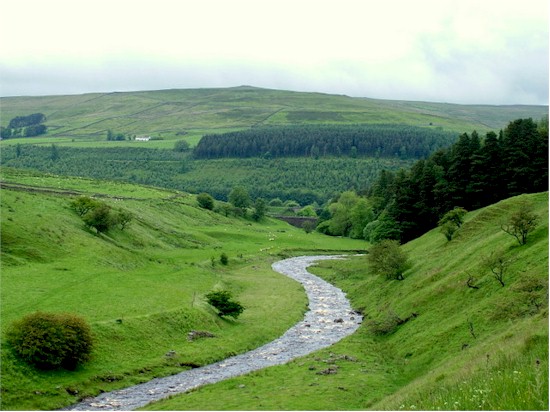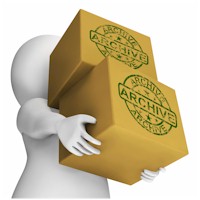|
We wish to thank everyone for your support of our efforts. |
|
We invite you to visit our website at www.thenetletter.net/netletters to view our archives. Restoration and posting of archive issues is an ongoing project. We hope to post every issue back to the beginning in 1995. |
|
We always welcome feedback about Air Canada (including Jazz and Rouge) from our subscribers who wish to share current events, memories and photographs. Particularly if you have stories to share from one of the legacy airlines: Trans-Canada Air Lines, Canadian Airlines, CP Air, Pacific Western, Maritime Central Airways, Eastern Provincial, Wardair, Nordair, Transair, Air BC, Time Air, Quebecair, Calm Air, NWT Air, Air Alliance, Air Nova, Air Ontario, Air Georgian and all other Canadian based airlines that once graced the Canadian skies. Please feel free to contact us at We will try to post your comments in the next issue but, if not, we will publish it as soon as we can. Thanks! |
|
Air Canada Cargo to add B-777 freighters Air Canada will add B-777 freighters for the first time as it continues to expand its presence in the all-cargo market. The carrier today announced an order for two factory-built B-777F's to enter into service in 2024. The order comes as Air Canada has been investing in converting its B-767 passenger aircraft into freighters. So far, two B-767 converted freighters have been put into service and two more factory-built B-767Fs have been delivered, due to begin operations next year. Six more converted B-767 aircraft are due to be added over the coming years. Jason Berry, vice president, cargo at Air Canada, said: “Today, we announced a further expansion of our fleet with the acquisition of two factory-built Boeing 777 freighters, to enter service in 2024. “The investment in long-range widebody freighters, combined with our growing 767 freighter fleet and robust passenger network will allow us continue to bring to life the most flexible and diverse cargo operation in the Americas.” Source: www.aircargonews.net |
 |
| Editors' Note: Image above is an artist's conception of a B777F, not an actual photograph. |
 for the latest posts at the Air Canada Media Centre. for the latest posts at the Air Canada Media Centre. |
 Click the logo to open the Air Canada YouTube channel. Click the logo to open the Air Canada YouTube channel. |
|
Vic Bentley sent in the following request: A friend sent me the photo below and requested information on the aircraft. I have some info but wondered if you could add some details. The photo was taken at Kitimat, B.C. in 1956. That was before the Terrace - Kitimat road was open. So Kitimat was served by marine aircraft that taxied up on the beach. I can see that it is a Grumman Mallard and I believe the airline logo is Pacific Western - can you confirm that? Also the color scheme is way too fancy for an airline in those days. Had it been a corporate aircraft? Is there any record of airline aircraft registrations in the 1950's? |
 |
|
Ken Pickford went to work on the research: My research shows that PWA operated 4 Mallards at various times from the 1950's to 1970's. Only 59 Mallards were built from 1946 to 1951. The four aircraft operated by PWA with registration and construction number (c/n) were the following::
CF-IOA was lost on August 3, 1955 on a flight from Kemano, B.C. to Kitimat, B.C with 5 souls aboard, no survivors. The first link at the bottom of the accident summary above contains a very detailed PDF list covering the history of all 59 Mallards built. That may help answer some of Vic Bentley's questions. Searching for some of the many registrations may turn up more photos. Many of the Mallards had many operators over the years. www.goodall.com.au/grumman-amphibians/grummanmallard.pdf Regarding one of his questions, yes, almost all of the 59 Mallards were originally operated as corporate or private aircraft. For example, one of the PWA aircraft (CF-HPU) was previously operated by the 20th Cenutry Fox Film Corporation (as it was known then), and another (CF-MHG) began life as a personal aircraft for William E. Boeing, founder of the Boeing Company who passed away at 75 in 1956. Regarding the photo he submitted, I came across the following photo taken at Vancouver, sometime between 1954 and 1959. www.airhistory.net/photo/458963/CF-HPA The basic livery looks the same as the one in Vic Bentley's photo, although the lighter colour at the top is different and it lacks the PWA name/logo at the front. It may well be the same aircraft. That was PWA's first Mallard, CF-HPA, named 'Kitimat Prince'. It went to B.C. Air Lines in 1959, which ironically was acquired by PWA in 1972. That aircraft was lost on takeoff from the Seal Cove seaplane base at Prince Rupert, BC on March 5, 1974 while with a subsequent operator (North Coast Air Services) with 3 fatalities of the 10 persons on board. It was en route to Masset in what was then the Queen Charlotte Islands, now Haida Gwaii. Here is another site focusing on the 21 Mallards that at one time were registered in Canada: theflyingboatforum.forumlaunch.net Ken |
|
In NetLetter #1490 we asked if anyone had memories of a tour of Britain for CP Air Employees to share. Janet Sinclair, YVR District Director for the Pionairs, submitted the following: Reading your article on a Drummond and Dixon tour brought to my memory a tour with Mike Dixon to Yorkshire. We walked the Yorkshire Dales section of the Pennine Way in May. It was an eclectic group of employees, spouses and one parent, my mother. As Mike was a friend, my mother and I flew to Amsterdam and connected on a commuter flight to Britain, with Mike and his wife Linda, a few days before the tour was to start. We were able to spend some time with Mike’s parents, seeing the sites of York, Harrogate and the surrounding area. Mike mentioned that just the year before, it had been a warm sunny May in Yorkshire, however, this year it was cold and damp. We met our group in a pub and were introduced to the retired army officer who was to be our guide. The first day we took off, with our heavy backpacks, and soon discovered that the way was uphill and our guide walked very quickly. Some of us lagged behind, out of breath. It was a great relief when we reached our first overnight stay at a lovely old pub. We had a great meal and an entertaining evening. The next morning my mother organized a taxi to the next pub to carry her backpack. Everyone, except our guide, put their backpacks in the cab. The guide was a bit chuffed that we were such “sissies”. There were many of these ponds and we had to be careful not to slip into one. We were a fun group and thoroughly enjoyed ourselves. Each night in a different pub, always with great food and, of course, we learned to like 'Old Peculiar' the local beer. Yorkshire is quite amazing, many small farms and mixed in with barren land. Near the end of our trek we reached the 'Aire Gap', the lowlands which form a geographical corridor between the South Pennine and Yorkshire Dales. There were huge granite stones we made our way across. Elsewhere, it is rolling pastures and flat riverside walking. On our final day the sun came out and we only had to walk up lovely grassy hills although, by this time, we were all in great shape for hiking. |
 |
|
Gilderdale Burn Looking northeast (downstream) from the Pennine Way towards the River South Tyne. Photo by George Tod @ commons.wikimedia.org |
|
Re: NetLetter #1490 - Airport Codes Karen Jenson Wales asks: Why is Bathurst city code ZBF? Ken Pickford responds: Regarding the ZBF IATA airport code for Bathurst, New Brunswick, I expect the question is why it starts with Z and not Y. At least 20 Canadian airports have IATA codes starting with Z. A few examples - Boundary Bay, BC (ZBB), Faro, Yukon (ZFA), Bella Bella, BC (ZEL), Masset, BC (ZMT), Fort McPherson, NWT (ZFM), Bromont, QC (ZBM), High Prairie, AB (ZHP), Grand Forks, BC (ZGF). Excerpt below is the explanation I've seen, from an aviation forum discussion on the subject a few years ago. Whether it's correct or not I don't know. The Z codes were apparently used for airports that didn't have an official weather reporting station. A few Canadian airports also have codes starting with X, e.g. Bearskin Lake, ON (XBE), Lac Brochet, MB (XLB). The 4-letter ICAO code used for operational purposes (flight plans, air traffic control etc.) for most Canadian airports is the IATA code preceded by C (e.g. YVR, CYVR). However, that's not always the case. For example, while the IATA code for Lac Brochet, MB is XLB, the ICAO code is CZWH. See the last sentence in the forum excerpt below re the Z and X codes. Canada used two letters for identification of a weather reporting station. Additionally, preceding the 2-letter code, was placed a Y (meaning "yes") where the reporting station was co-located with an airport, a W (meaning "without") where the reporting station was not co-located with an airport, and a U where the reporting station was co-located with an NDB. An X was used if the last two letters of the code had already been taken by another Canadian ident, and a Z was used if the locator could be confused with a U.S. three letter ident. |

 We have welcomed 174 new subscribers so far in 2022.
We have welcomed 174 new subscribers so far in 2022.
